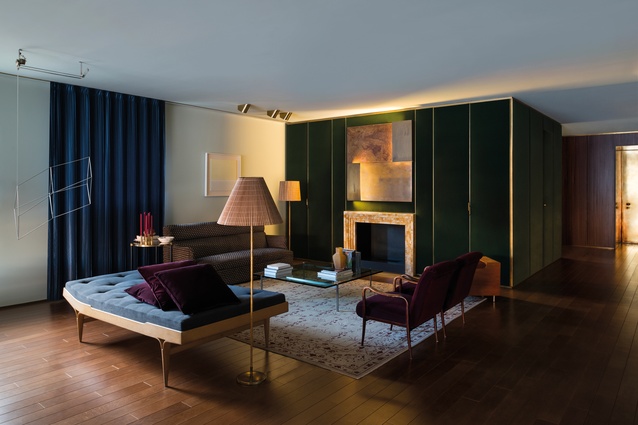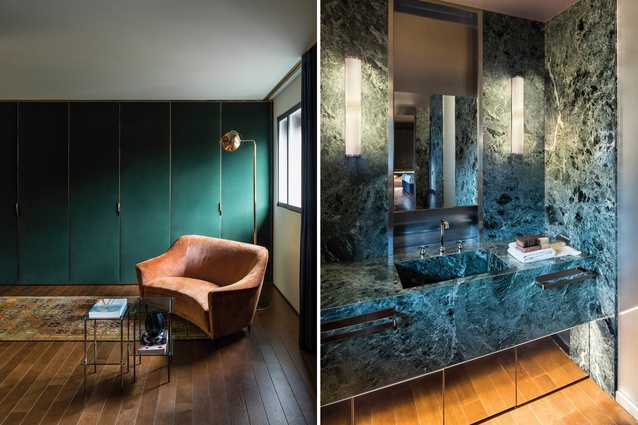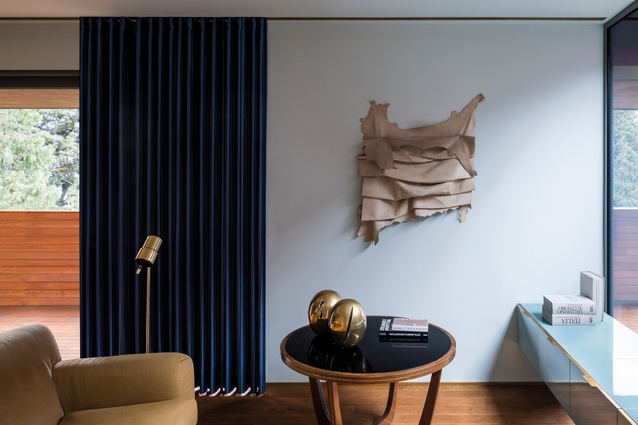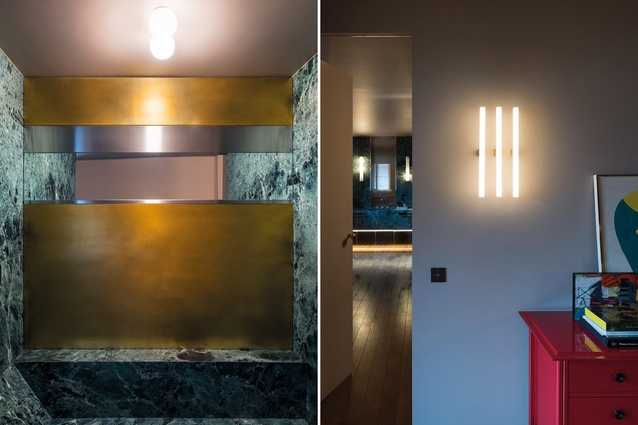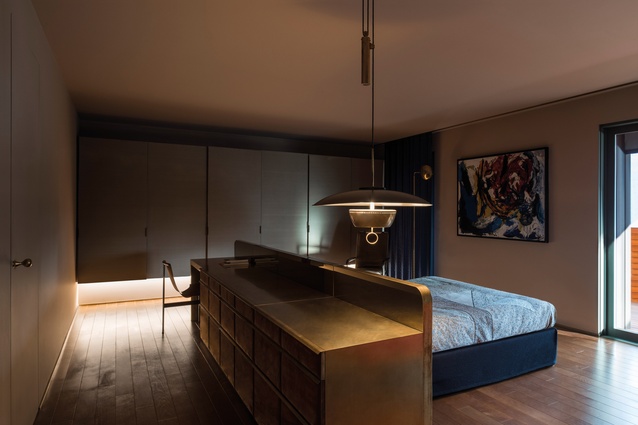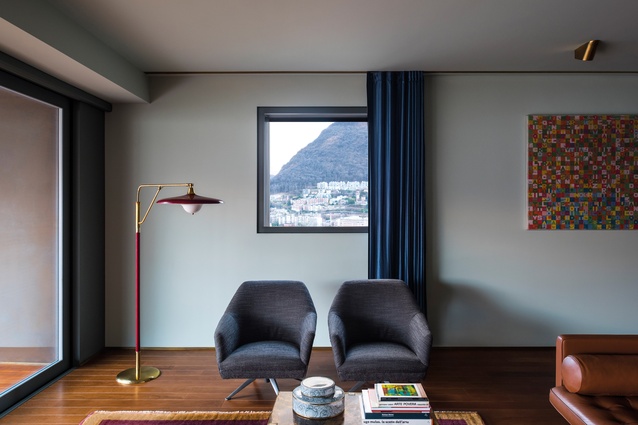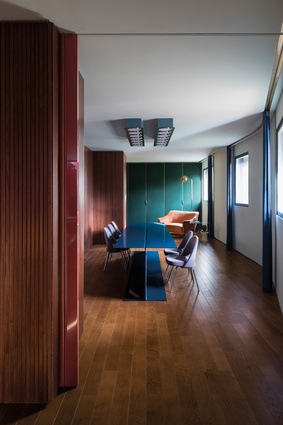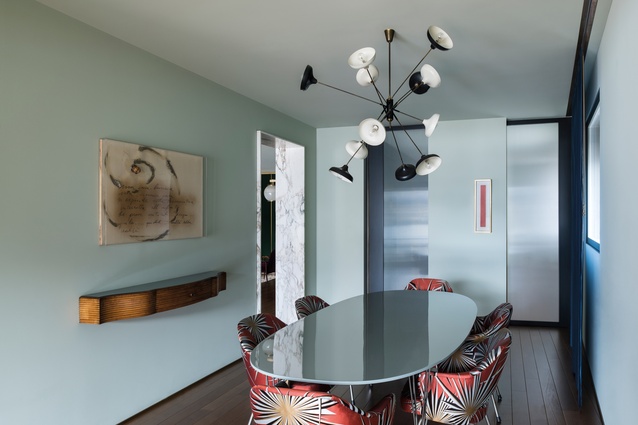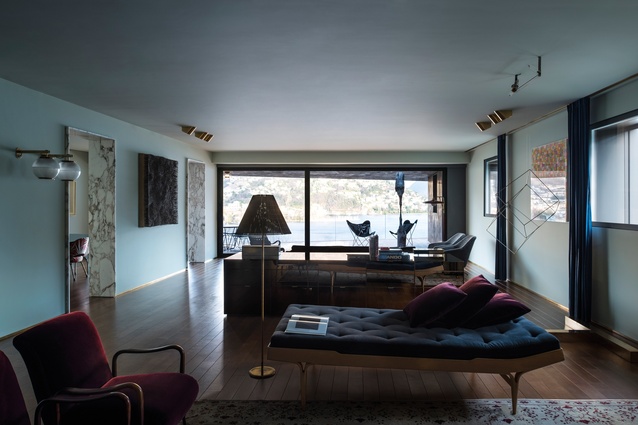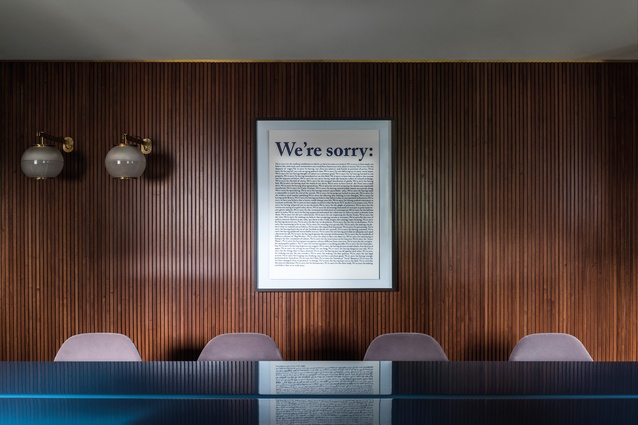Lakeside luxe: Lugano apartment
Located on the edge of Lake Lugano, a glacier-fed lake that borders Italy and Switzerland, this apartment by Milan-based design firm Dimore Studio features clean lines and a balance of colours and materials, which result in a refreshing-yet-warm interior experience.
The apartment is spread over two levels in a recently built apartment building, which was designed by Milan architecture practice Archea Associati. Comprising just 16 apartments, the building is supported solely by two stairwells, which connect the floors of the dwellings. This removes the need for pillars inside the rooms, leaving the interior spaces open and flexible. The design also includes a curved wall that adds a sense of organic movement in each of the apartments.
In this apartment, known as the Lugano apartment, the living space is contained on one 650m2 floor, which includes four bedrooms, two living spaces, a dining room, a kitchen, two bathrooms and storage space. The upper level is a 750m2 terrace, where extensive lake views can be enjoyed.
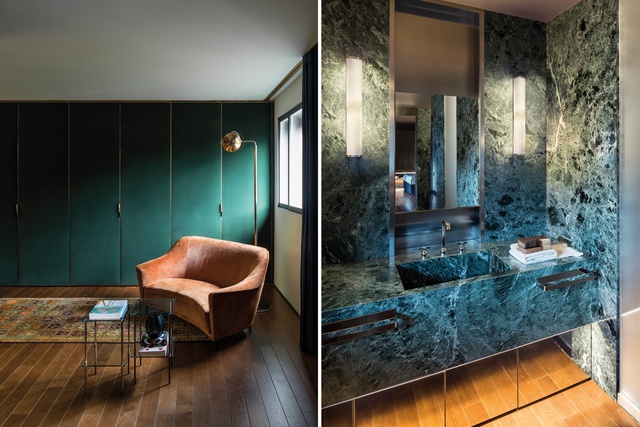
Marble is a main feature of the material palette, especially in the bathrooms. For the master bathroom, a mottled green Alpi marble provides an aquatic-like texture that references the lake outside. In another bathroom, which is shared by the other three bedrooms, a monochromatic stone gives a more contemporary look.
Calacatta gold marble is used for the door frames in the living room. Yellow Siena marble provides warmth to the guest bathroom as well as the fireplace in the living room, where it contrasts beautifully with the green, velvet-lined walls.
“As with all our projects, there is a combination of historical and contemporary references in the choices of materials, metals and textures,” says Dimore Studio’s co-director Britt Moran. “In the living room, we have added a velvet block, which contains the guest bathroom, hidden cupboards and the chimney.”
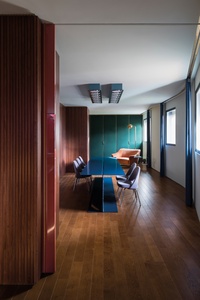
This velvet-lined cube creates a sense of softness as well as richness in the room. It gives the appearance of a jewellery box: an effect that is accentuated by the brass framing. Brass is also used in the edging of the living-room walls and in furniture elements, such as the mid-century lamp in the living area, as well as a full brass door at the back of the room.
“Natural brass, varnished iron and glossy lacquering characterise most of the furnishings – heritage, custom and manufactured – thus creating a fil rouge of materials and colour,” explains co-director Emiliano Salci.
Durmast oak flooring provides a consistent grounding for the entire apartment. The lines of the floors move outside onto the adjoining loggia and balcony, where they are continued in a more weatherproof teak. “The chromatic continuity of the flooring and the wide windows enhance the space and allow for perfect views of the mountains and lake,” says Moran.
Durmast oak is also used for the wall linings in the dining area, where it provides a sense of mid-century warmth and simplicity.
Furniture was carefully chosen for the apartment at the same time as the interior palette was being completed, to ensure a consistency of colours and materials. “Iconic mid-century collectable pieces co-exist with contemporary items selected from the international design scene and Dimore Studio’s Progetto Non Finito collection. The result is an interesting juxtaposition of furniture and the home-owners’ modern art collection,” says Salci.
Compact, but with everything in its place, this apartment shows a sense of true, refined elegance that juxtaposes pleasantly with the rawness of the natural beauty outdoors.
This article first appeared in Urbis magazine.


